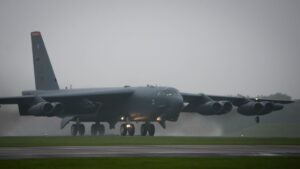
B-52H bombers cycled through bomber task force (BTF) deployments from the United Kingdom to Romania on March 4 and March 7, as the U.S. seeks to deter any Russian designs on NATO countries. The deployments come as Russian forces continue their attacks in Ukraine to topple the government there. On March 4, B-52Hs assigned to the 5th Bomb Wing at Minot AFB, N.D., took off from RAF Fairford and exercised close air support (CAS) training alongside U.S. and German Joint…














